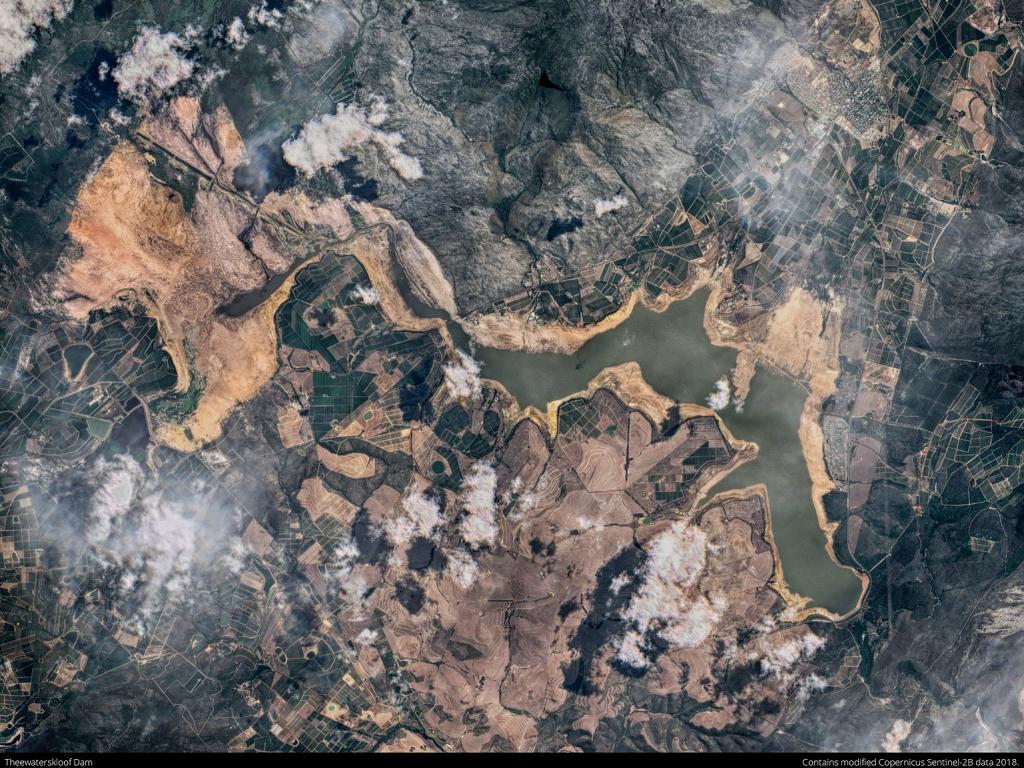Dimming the sun might help reduce the risk of future “Day Zero” droughts in Cape Town, but it can’t solve the climate crisis

Artificially dimming the sun by injecting reflective particles into the upper atmosphere could help reduce the likelihood of “Day Zero” level droughts in Cape Town - by as much as 90% - in the future, say scientists from the University of Cape Town, in a paper recently published in Environmental Research Letters.
The research team assessed the potential impact of “solar radiation management” geoengineering (SRM) on drought and water availability. They used a climate model to quantify how likely droughts as severe as the “Day Zero” event, that nearly caused the City of Cape Town to run out of water in the summer of 2017-2018, would become near the end of the century with and without SRM.
SRM is a controversial proposal for reducing some of the risks of climate change. If it were implemented, it would involve blocking a small amount of solar radiation from reaching the Earth’s surface, by, for example, injecting reflective aerosols into the upper atmosphere, as studied here. If emissions cuts prove insufficient, SRM might well be the only way to keep global temperature rises below the global target of 2°C, but the approach has its limits. For example, it only masks the warming effect of greenhouse gases, and it can’t reverse ocean acidification.
Lead author, Dr Romaric C. Odoulami, said: “Our findings suggest that SRM could help to lower future risks of severe droughts in Cape Town. These are a substantial, new contribution to our understanding of the possible impact of SRM at the local scale, using the lens of an iconic climate disaster, the Cape Town “Day Zero” drought. These findings must be seen in context, however. A change of location, model, or SRM deployment design might produce significantly different results.”
The team simulated a world of very high greenhouse gas emissions with and without the deployment of SRM. They found that dimming the sun, using reflective aerosols to maintain global mean warming at 2020 level, could offset up to 90% the risk of droughts as severe as the Cape Town “Day Zero” drought by the end of the twenty-first century. However, the authors are clear this should not be viewed as an alternative to cutting emissions, and there are a range of less risky climate actions that could be put in place to help limit future “Day Zero” drought risk. The South African Integrated Resource Plan (IRP 2019) envisages that by 2030, approximately 40% of the country’s energy will come from renewable sources. However, 60% will still come from the burning of fossil fuels, and potentially increase the likelihood of events like the Cape Town drought.
Professor Mark New, one of the study’s co-authors, said: “We already know the best way to avoid global warming and its impacts: it is to cut greenhouse gas emissions radically. But we also have to understand other options, and their wider implications, in case emissions cuts prove insufficient to avoid climate damages, and this study is an important step forward for African involvement in SRM research.”
The research is part of a wider project that supports developing countries and emerging economies as they research how SRM could affect their regions. Eight projects received research grants through the DECIMALS Fund from the SRM Governance Initiative: in Argentina, Bangladesh, Benin, Indonesia, Iran, Côte d’Ivoire, Jamaica, and South Africa.
After two years of research, the teams are starting to publish their findings. Earlier this year, studies from South Africa and Benin found that SRM might be able to reduce the impacts of climate change across most regions of Africa, but not all. Both studies concluded that parts of West Africa could be worse off if sun-dimming were used to combat climate change, underlining the fact that SRM is likely to be contested and highly controversial even if it can reduce climate change impacts for most people.